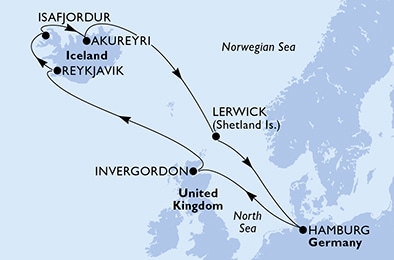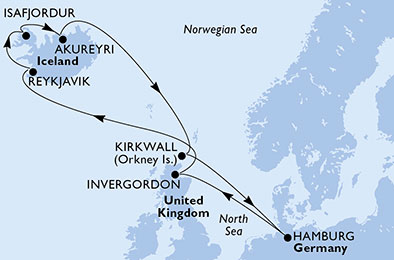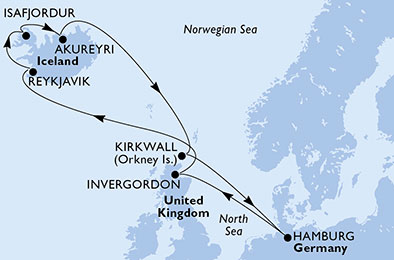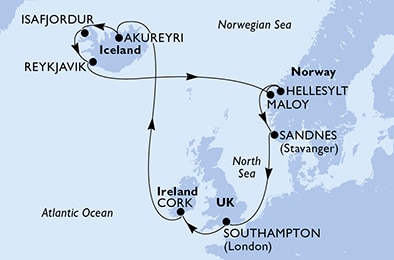
Port Akureyri
Akureyri is the fourth largest city in Iceland and is also known as the capital of North Iceland due to its location. The picturesque Eyjafjörður Fjord, in which Akureyri is located, is deep enough to accommodate the largest cruise ships, making it an ideal cruise destination.
The main landmark of Akureyri is the Protestant church Akureyrarkirkja, designed by Guðjón Samúelsson in 1940 (the same architect is the author of Hallgrímskirkja in Reykjavík, the most famous church in Iceland). In the city it is also possible to visit Lystigarður Akureyrar, one of the northernmost botanical gardens in the world and several famous historic houses.
A major attraction of the city is the local gastronomy, which gives visitors a taste of traditional Icelandic cuisine. Akureyri's surroundings offer unique opportunities to explore the incredible Icelandic landscape including geysers, waterfalls and volcanic formations.
History
The history of the Icelandic port of Akureyri dates back to the 9th century, when the first Nordic settlers arrived on the island. However, it was not until the 16th century that Akureyri began to develop as a commercial centre, thanks to its excellent natural harbour and proximity to fertile fishing grounds.
In the 19th century, the port of Akureyri played a key role in the Danish monopoly trade, which further strengthened its position as an important trading port. Today it is the second largest port in Iceland and serves as an important centre for the country's fishing industry, cruise ships and freight transport. It continues to be an important part of Iceland's economy and infrastructure.
Trip tip: Goðafoss Waterfall
Goðafoss Waterfall is one of the most famous water cascades in Iceland. Its name translates to "waterfall of the gods". It is not said to be the largest, tallest or oldest waterfall in the country, but its crystal clear water and the legends associated with it make it probably one of the most famous. On the way to it, you'll also enjoy a beautiful view of the fjord and the wild Icelandic countryside.








 With bus transport to the port
With bus transport to the port











